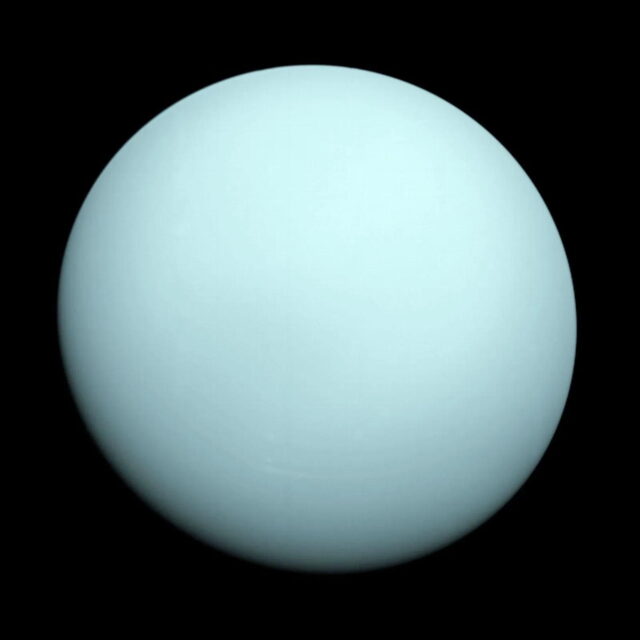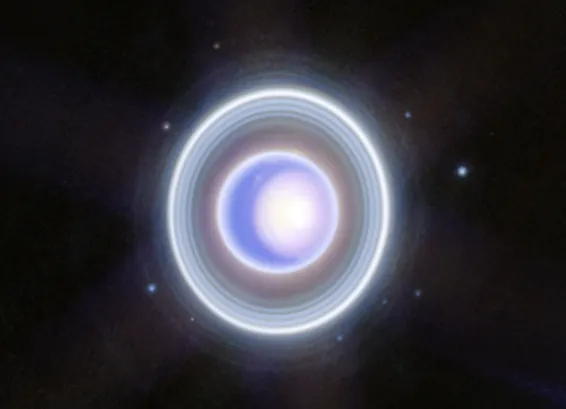20 years of observations have given us more knowledge about the icy giant.
Uranus, the seventh planet in the Solar System, located between Saturn and Neptune, has long been a mystery. But by analyzing observations made by NASA’s Hubble Space Telescope over a 20-year period, a research team from the University of Arizona and other institutions has provided new insights into the composition and dynamics of the planet’s atmosphere.
Information about Uranus is limited. What we know is that the planet is composed mainly of water and ammonia ice, its diameter is about 51,000 kilometers, about four times that of the Earth, and its mass is about 15 times greater than Earth’s. Uranus also has 13 rings and 28 satellites.
In January 1986, NASA’s Voyager 2 space probe successfully completed what has been, to date, the only exploration of the planet, conducting a flyby as part of its mission to study the outer planets of the Solar System.

But thanks to this new research, we now know a little more about this icy giant. According to the research, which assessed Hubble images taken between 2002 and 2022, the main components of Uranus’ atmosphere are hydrogen and helium, with a small amount of methane and very small amounts of water and ammonia. Uranus appears pale blue-green because methane absorbs the red component of sunlight.

The research has also shed light on the planet’s seasons.
Unlike all of the other planets in the Solar System, Uranus’ axis of rotation is almost parallel to its orbital plane. For this reason, Uranus is said to be orbiting in an “overturned” position, as shown in the picture below. It is hypothesized that this may be due to a collision with an Earth-sized object in the past.

The planet’s orbital period is about 84 years, which means that, for a specific point on the surface, the period when the sun shines (some of spring, summer, and some of fall) lasts about 42 years, and the period when the sun does not shine (some of fall, winter, and some of spring) lasts for about 42 years as well. In this study, the research team spent 20 years observing the seasons.
Over that period, the research team watched as the south polar region darkened going into winter and the north polar region brightened as summer approached. By observing the planet at four different points in time, years apart, they could see how the gradual shifting of the seasons affected the planet. The top row shows how the planet appeared when viewing it with just visible light.

The second row from the top is a pseudo-color image based on visible-light and near-infrared observations. Green indicates less methane in the atmosphere than blue, and red indicates the absence of methane. The lower levels of atmospheric methane at the poles (which, remember, are on the planet’s sides rather than its top and bottom) indicate that there is little seasonal variation in methane levels. In the left-most image on this row, the green-colored south pole is moving into darkness. In the other three images, the green, lower-methane region of the north pole can be seen coming into view. (The fourth row shows the same lack of methane variation, but without coloration.)
But what about the third row? This shows estimates of aerosol abundance, using visible light and infrared images that haven’t been colored. The light areas are cloudy with high aerosol abundance, and the dark areas are clear with low aerosol abundance. What is noteworthy in these images is that there is seasonal variation. The arctic region was clear at the beginning of spring (in 2002), but became cloudy as summer progressed (2012 through 2022). Conversely, the antarctic region appears to have cleared as fall progressed into winter. The team hypothesizes that these seasonal changes are evidence that sunlight changes levels of aerosol mist on the planet.
Although the results of this study cover a long 20-year period, this still only reflects one period of seasonal change in Uranus’ atmosphere. The research team will continue to observe Uranus as the polar regions move into new seasons to gather more data.
This story originally appeared on WIRED Japan and has been translated from Japanese.
Hope you enjoyed this news post.
Thank you for appreciating my time and effort posting news every day for many years.
News posts... 2023: 5,800+ | 2024: 5,700+ | 2025 (till end of April): 1,811
RIP Matrix | Farewell my friend ![]()
- Mutton
-

 1
1
 You are from
You are from 


3175x175(CURRENT).thumb.jpg.b05acc060982b36f5891ba728e6d953c.jpg)
Recommended Comments
There are no comments to display.
Join the conversation
You can post now and register later. If you have an account, sign in now to post with your account.
Note: Your post will require moderator approval before it will be visible.